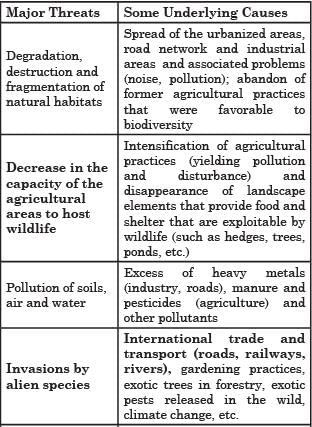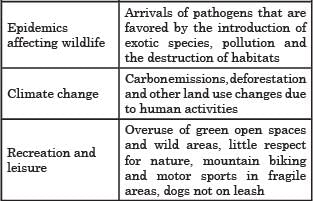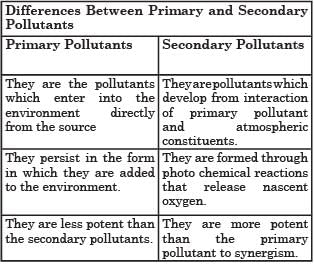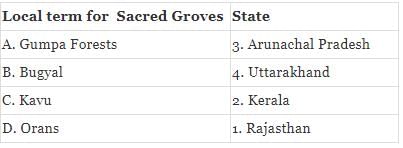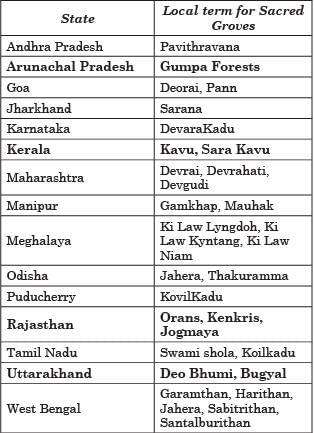Test: Environment & Ecology - 5 - UPSC MCQ
30 Questions MCQ Test - Test: Environment & Ecology - 5
Match the following:

Select the correct answer using the code given below:


Select the correct answer using the code given below:

Consider the following statements with respect to the Acid Rain:
1. In Acid rain sulfuric and nitric acids formed in the atmosphere fall to the ground mixed with rain, snow, fog, or hail.
2. Acid rain falling on a forest’s soil disrupts soil nutrients and kills microorganisms in the soil. 3. Acid rain increases the methane emission from wetlands by disturbing their pH levels.
Which of the above statements is/are correct?
1. In Acid rain sulfuric and nitric acids formed in the atmosphere fall to the ground mixed with rain, snow, fog, or hail.
2. Acid rain falling on a forest’s soil disrupts soil nutrients and kills microorganisms in the soil. 3. Acid rain increases the methane emission from wetlands by disturbing their pH levels.
Which of the above statements is/are correct?
| 1 Crore+ students have signed up on EduRev. Have you? Download the App |
Consider the following statements:
1. Decrease in capacity of the agricultural areas to host wildlife
2. International trade and transport
3. Mariculture
4. Desiccation of soils and wetlands
5. Beam trawling
Which of the above are the major threats to biodiversity on Earth?
1. Decrease in capacity of the agricultural areas to host wildlife
2. International trade and transport
3. Mariculture
4. Desiccation of soils and wetlands
5. Beam trawling
Which of the above are the major threats to biodiversity on Earth?
Consider the following statements with respect to Black Carbon:
1. Black carbon is the result of incomplete combustion of fossil fuels, biofuel, and biomass.
2. It is directly emitted in the atmosphere as fine particles PM5.
3. Black carbon warms the atmosphere by reducing albedo when deposited on snow and ice.
4. Life time of black carbon in the atmosphere is more than 100 years.
Which of the above statements is/are correct?
According to Conservation International, which of the following is/are the strict criteria for declaring an area as a Biodiversity Hotspot?
1. The area must have at least 1500 vascular species of plants or a high percentage of plant life as endemics.
2. The area must be threatened with its 70% original habitat loss.
Select the correct answer using the code given below:
Which of the following is/are known as Criteria Pollutants in India?
1. Carbon monoxide
2. Nitrogen oxides
3. Sulfur dioxide
4. Persistent Organic Pollutants
5. Total suspended particulates
Select the correct answer using the code given below:
Consider the following statements regarding Biodiversity in India:
1. India accounts for nearly 18% of the recorded species in the world.
2. The varied Edaphic, Climatic and topographic conditions have resulted in a wide range of ecosystems and habitats in India.
Which of the above statements is/are correct?
Consider the following statements with respect to the Air Pollutants:
1. Primary pollutants are usually produced from a process, such as ash from a volcanic eruption.
2. Secondary pollutants are not emitted directly thus are less harmful than the primary pollutants.
3. Ground level ozone is a prominent example of a Primary pollutant.
Which of the above statements is/are correct?
Consider the following statements regarding Mangroves?
1. Mangroves are generally found in tropical and sub-tropical sheltered coastlines.
2. Mangroves trees have high resistance to salinity stress and water logging.
3. Mangroves helps in increasing the fertility of the coastal soil by blocking salinity ingress.
Which of the above statements is/are correct?
Which of the following are major sources of e-waste used in the manufacturing of electronics?
1. Mercury
2. Chromium
3. Rare earth elements
4. Poly Brominated Diphenyl ethers
5. Poly Vinyl Chlorides
Select the correct answer using the code given below:
Match the following:
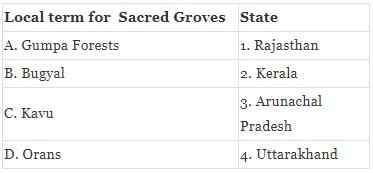
Select the correct answer using the code given below:

Which of the following sewage management steps is/are correctly matched?
1. Primary treatment: It is done to remove metals to prevent the grit from causing damage to the equipment.
2. Aeration: It creates a suitable environment for natural bacteria to digest the waste in water and form activated sludge.
3. Secondary treatment: This stage has the ability to remove up to 99 percent of the impurities from the wastewater.
Select the correct answer using the code given below:
Botanical Gardens refer to scientifically planned collection of trees, shrubs and plants. In this context, consider the following statements:
1. Botanical Gardens are now mainly focusing on conserving rare and threatened plants.
2. They help in conserving indigenous and local knowledge regarding use of plant resources.
3. Botanic Garden Conservation International (BGCI) is an intergovernmental organization to link botanic gardens in a global network.
Which of the above statements is/are correct?
Which of the following statements are correct regarding the impact of mining activities on the environment?
1. Mine drainage can modify water pH and temperature and make the groundwater acidic.
2. It destroys landscapes which in turn lead to soil erosion and destruction of agricultural land.
3. It leads to destruction or displacement of species in areas of excavation and piling of mine wastes.
Select the correct answer using the code given below:
Consider the following:
1. Star tortoise
2. Monitor lizard
3. Pygmy hog
4. Lion Tailed Macaque
Which of the above species are found in India?
“Soil pollution is defined as the ‘addition of substances to the soil, which adversely affects physical, chemical and biological properties of soil and reduces its productivity.” In this context, consider the following causes of soil pollution:
1. Indiscriminate use of fertilizers.
2. Dumping of solid waste
3. Soil erosion
Which of the above factors is/are responsible for soil pollution?
Consider the following statements:
1. Gir sanctuary holds the only wild population of Asiatic lions in the world.
2. It is listed in Schedule-I of Wildlife (Protection) Act 1972.
3. Recently a vaccine has been developed by India to directly cure the Canine Distemper Virus common amongst the big cats.
Which of the above statements are correct?
With reference to the landfills, consider the following statements:
1. Landfills give rise to air pollution and water pollution.
2. Sanitary landfill uses a clay liner to isolate the trash from the environment.
3. Municipal solid waste (MSW) landfill involves the combustion of organic substances contained in waste materials.
Which of the above statements is/are correct?
Which of the following statement regarding Trade Related Analysis of Fauna and Flora in Commerce (TRAFFIC) is/are correct?
1. It is a joint programme of Worldwide Fund for Nature (WWF) and United Nations environment Programme (UNEP).
2. It works in collaboration with Convention on International Trade in Endangered Species of Wild Fauna and Flora (CITES).
3. It acts to reduce wildlife crime and illegal trade.
Select the answer using the code given below:
Which of the following prerequisites with regard to pollutants are necessary for bio magnification in food web?
1. Longevity
2. Insolubility in fats
3. Mobility
4. Solubility in water
Select the correct answer using the code given below:
Match the following:
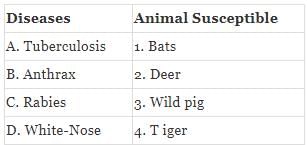
Select the correct answer using the code given below:

Which of the following are man-made sources of radioactive pollution?
1. Terrestrial radiations from radio-nuclides present in earth’s crust
2. Uranium mining
3. Radiation therapy
4. Transportation of nuclear material
Select the correct answer using code given below:
Consider the following statements:
1. The pink pages in the Red Data Book published by IUCN include the vulnerable species.
2. The IUCN has downgraded conservation status of snow leopard from endangered to vulnerable.
3. IUCN is a leading governmental authority for the conservation of animal species only.
Which of the above statements given above is/ are correct?
Which of the following pairs is/are correctly matched?
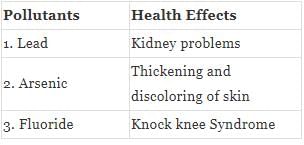
Select the correct answer pair using the code given below:
With respect to Gangetic Dolphins, consider the following statements:
1. These are found in river Ganga only.
2. They have been classified as “critically endangered” by IUCN.
3. These species are practically blind and rely on bio-sonar waves to move around.
4. Gangetic Dolphins have been recognized as National aquatic animal of India.
Which of the above statements are correct?
Which of the following is/are correct regarding Non-ionising radiations?
International Consortium on Combating Wildlife Crime Mission has been formed to strengthen criminal justice systems and provide coordinated support at national, regional and international level to combat wildlife and forest crime. Which of the following organizations is/are the part of it?
1. INTERPOL
2. World Bank
3. United Nations Office on Drugs and Crime.
4. Secretariat of the Convention on International Trade in Endangered Species of Wild Fauna and Flora.
Select the correct answer using the code given below:
Which of the following activitie(s) is/are responsible for the decrement in the economic output from inland fishery?
1. Discharge of untreated effluents from the industrial units and urban silage which destroy the fish.
2. Construction of dams prevents the free migration of fish to their usual breeding and feeding grounds.
3. Deforestation and frequent flooding due to poor watershed management.
Select the correct answer using the code given below:
Identify the National park having the following characteristics:
1. It lies in the Central Crystalline belt of the Greater Himalayas.
2. The park is bounded on the north by the banks of Indus River and parts of Zaskar Range.
3. It is majorly protecting the Snow Leopards.
Select the correct answer using the code given below:
Which of the following statements is /are correct about the Biochemical Oxygen Demand (BOD)?
1. It is the amount of dissolved oxygen needed by bacteria in decomposing the inorganic waste present in water.
2. The higher value of BOD indicates the low DO content of water.
Select the correct answer using the code given below:



